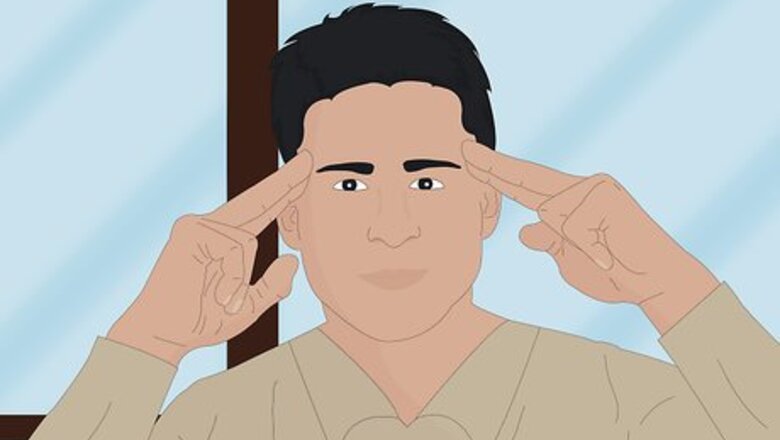
views
X
Research source
Some know the name but cannot put a face to it, while others recognize the face but fail to identify the name. It is frustrating and embarrassing. However, we are not doomed to a life of awkward party and office exchanges. With some special techniques and mental training, you can improve your recall of names, faces, and the two together.
Remembering Names

Concentrate on names. Simple lack of attention is one reason why we tend to forget names. After all, there may be a lot going on. You may be at a party with lots of new people; you may be at your first day at a new job and are very anxious. Sometimes we just aren’t listening hard enough. That said, try to focus your energy on people’s names when meeting them. Make a conscious effort. Also, make sure that you hear the name clearly. Ask the person to repeat the name if you miss it the first time. This may feel awkward, but it will save you the greater embarrassment of forgetting.
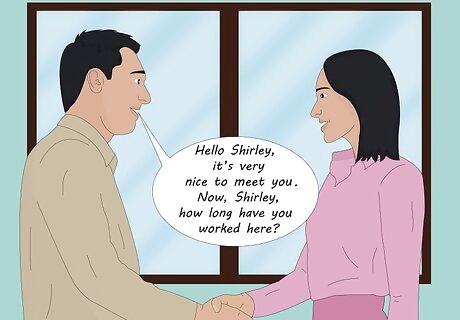
Meet, greet and repeat. One way to get a person’s name to stick is to use is in the first words of your conversation. Repeat the name several times in the sentences that follow, making a point of pronouncing it correctly. Then, when saying goodbye or moving on, use the name again. The repetition will help the name stick with you. Say something along the lines of, “Hello Shirley, it’s very nice to meet you. Now, Shirley, how long have you worked here?” Asking about a person’s name is another way to repeat it in conversation. For example, “I’m very please to meet you Natasha. Do you go by Natasha, or just Tasha?” Or, “I really like your name, Sven. Where does the name Sven come from?”

Spell it out. Asking a new acquaintance to spell out her name is a good idea, particularly if it is long or unusual. You might also consider asking for a business card, as well, and glance at the name while talking. If you have a visual memory, this technique can work very well. Your conversation might go something like this: “Eupraxia, that’s a very interesting name. How do you spell Eupraxia? You don’t by any chance have a card, do you Eupraxia?” Repetition, again, is important. Try to use the name several times during the exchange.
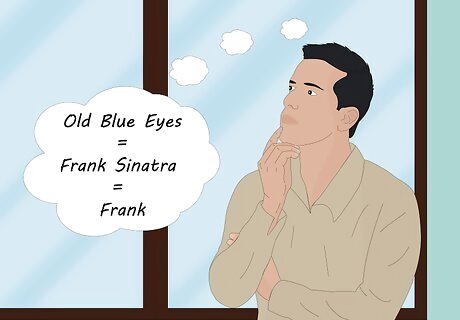
Make familiar connections. Look at the person’s face and try to make some kind of mental association with the name. Say that you’ve just met Frank. Frank has striking blue eyes. Remembering that feature, you might start to call him “Old Blue Eyes” in your head as a way to recall him. “Old Blue Eyes” = Frank Sinatra = Frank. The key to remembering through visual images is creating a link in your mind between the face and the name. It doesn’t have to be a unique feature. It could be that “Harry” reminds you of an uncle. Or maybe you can link a certain song to your new colleague “Wendy.” Making visual images force you to invest time into creating a link. This strengthens your memory of the name as well as the face.

Create an association. Like connecting a person’s name to something or someone you already know, you can also try to make a mental picture or device to attach to a name. These links should be memorable, and make it easier for you to recall the name. One idea is alliteration – that is, a bit of wordplay. For example, you might remember David in accounting’s name by labeling him (in your head, of course) Dollar Dave, or Peter in marketing as Pennsylvania Peter. There is also the option of a mental association. If you know a Gordie from Canada, you might for example imagine him playing ice hockey.

Create cues. Look, greet, repeat, and then look again! It takes some time to put a name to create a long-term memory. The more you use a name and the more you work at it, the sooner you will be able to recall it. You might consider making cues. For example, make a list of the people at in your book club and review it until you have the names down pat. People who deal with many names – managers, teachers, and others – sometimes find it useful to have a roster. You might even put pictures with the names as well as identifying traits. For instance, “Praveet. Majoring in history. Wears horn-rimmed glasses. Likes debate club.” This combines the name with a mental and personal image of the student. It gives you a living snapshot of the person.
Remembering Faces
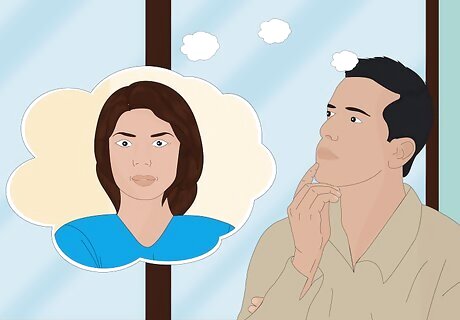
Pick out a unique trait. Studies show that people generally have an easier time remembering faces than names. Our brains are just better at handling visual data. So, picking a face out of a crowd should be easier than remembering a name. One way of going about this is to focus on a unique or a familiar feature or trait. Study the eyes, hair, nose, mouth, complexion, hairline, ears, and any other facial features. Pick out an outstanding trait, i.e. “Rhonda’s earlobes are connected to her head,” or “Serge has a big mole on his chin.” You might also pick out the familiar. For instance, maybe Ahmad reminds you of your uncle.

Associate the face with a strange visual cue. This is an interesting and fun technique. When you meet someone new, create a fantastic or odd visual cue. One memory champion focuses on specific physical features. For example, for a person named “Nelson” he might first make an association with Nelson Mandela and then, because Nelson has a large nose, imagine a tiny Nelson Mandela inside of his nostril. If this technique sounds somewhat silly, it is. In fact, silliness is the point. The more outrageous the image, the more likely you are to remember it – and the person’s face and name.
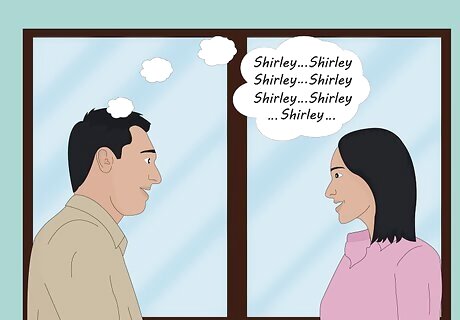
Link the face to the name. To link a person’s face and name, repeat, repeat, repeat. Use the name when speaking to the person, consciously looking at them. When you have parted ways, review the name and face together. As with remembering names, cue cards or a roster will help. So can forming mental devices like wordplay or images. Just remember, the more you associate a name with a face, the more like you are to confirm your memory.
Training your Memory
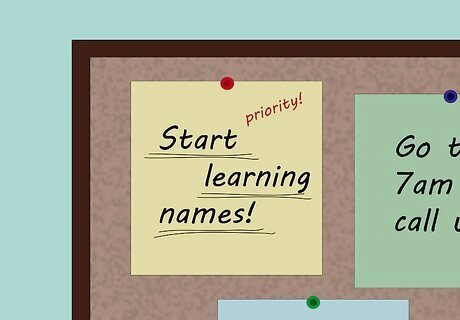
Make learning names a priority. Some people struggle more than others to remember names and faces. A small percentage of people are “super recognizers” and recall a face for years. Women are also better than men at remembering faces. However, we can all get better and improve with effort. Make a conscious effort to train your memory. There are ways that you can strengthen your recall, and not just for names and faces. Pay attention, first of all. Whether names, faces, addresses, or otherwise, we process information very fast. You need to be ready to receive it. It takes about 8 seconds of focus to implant information into our memory. You need to pay attention to learn and remember something.

Use mnemonic devices. Mnemonic devices are things that help us to remember, usually through association. There are a lot of ways to form a mnemonic device. You can use words, letters, rhymes, or visual images. The more creative, the better and easier it will be to recall information. An “acrostic” is a sentence where the first letter of each word encodes the initial of what you want to remember. Choir boys use an acrostic to remember the notes for th bass clef: “Good boys do fine always” = G, B, D, F, A. An “acronym” is a words that uses the first letter of a series of other words. For example, some people remember the Great Lakes with the acronym HOMES: Huron, Ontario, Michigan, Erie, and Superior. Rhymes and wordplay help, too. How many days are in each month? Just remember, “Thirty days hath September, April, June, and November...”

Play games. Mental activity will keep your brain active and limber, just as physical exercise will keep your body healthy and vigorous. Try games that stimulate your short-term and long-term memory. For example, play crossword puzzles or Sudoku. “Simon Says” and “Concentration” are excellent recall games, as well. Other activities that you might not think of as games also require memory. Do you sing in a choir or play an instrument? Playing a song from memory is good mental exercise. Chess is also a good game for memory, as well as logic and problem solving. In one 1985 study, students who played chess regularly all demonstrated improved memories and organizational skills.
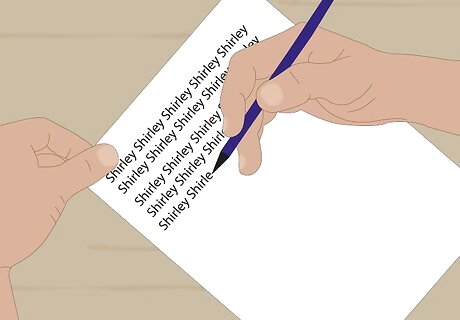
Use different senses. People favor different ways of learning information. Some of us are visual learners; others learn best by reading or by hearing information. Try to use different senses in order to better imprint things in your memory. For example, the act of rewriting a name by hand stimulates your brain in different ways – you see the name again, you think about it, and your body also creates a physical memory of the act of writing. This is why note taking with pen or pencil may be more effective than note taking with a computer. Try to relate information to colors, scents, textures, or even tastes. If you learn best by reading, read aloud to stimulate your sense of hearing at the same time.

















Comments
0 comment